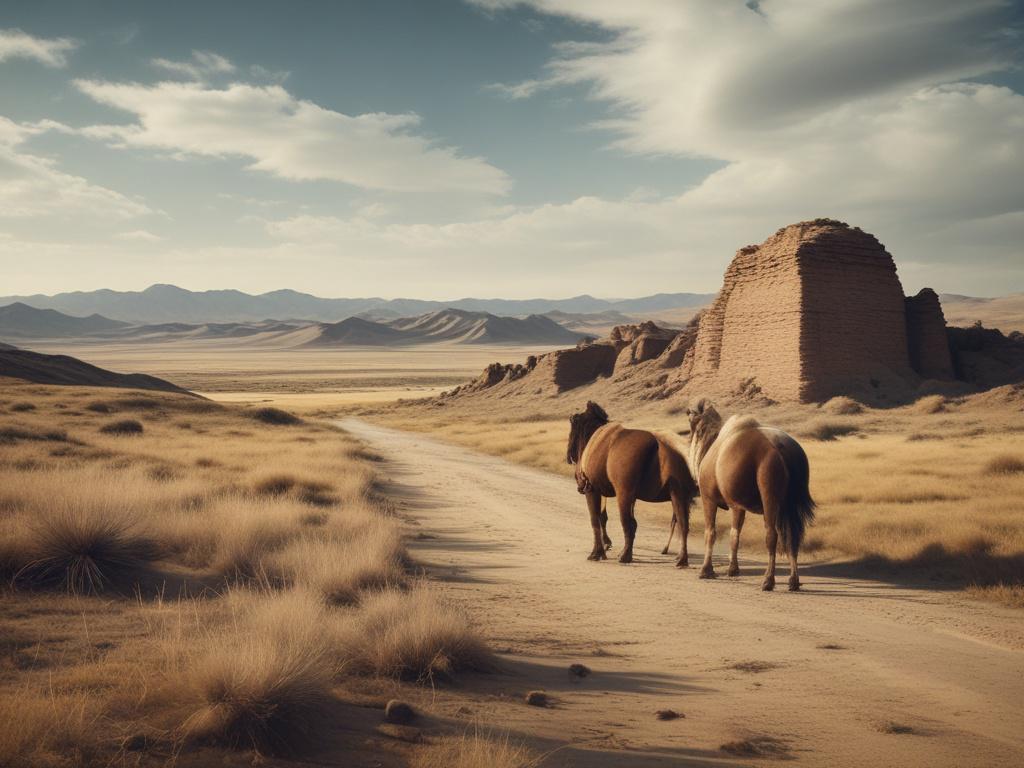

Southern Mongolia is a region steeped in a rich and complex history that has shaped its cultural landscape for centuries. From its ancient nomadic tribes to the influence of various dynasties, this area stands as a testament to the resilience and adaptability of its people. As we dive into the rich and complex history of Southern Mongolia, we will explore its vibrant cultural heritage and examine the significant milestones that define its current identity.
Understanding Southern Mongolia means appreciating not only its past but also the diverse communities that continue to thrive today. The interplay of tradition and modernization has created a unique environment where age-old customs coexist with contemporary influences. In this blog post, we will uncover key historical events that have molded Southern Mongolia's significance and reflect on the enduring legacy of its inhabitants, enriching our understanding of this fascinating region.
Exploring the rich cultural heritage of Southern Mongolia
Southern Mongolia boasts a vibrant tapestry of cultural traditions and practices that reflect its long-standing history and diverse communities. Influenced by a blend of Mongolian nomadic lifestyles and the surrounding Chinese civilization, this region serves as a living museum of cultural interactions. From its traditional throat singing and intricate craftsmanship to its flavorful cuisine, Southern Mongolia manifests a unique identity deeply rooted in the past. Festivals such as Naadam celebrate the region's heritage through traditional sports, music, and dance, allowing locals and visitors alike to connect with the history that shapes their present.
Moreover, the significance of Southern Mongolia's cultural heritage extends beyond merely honoring the past; it plays a crucial role in contemporary societal cohesion. Communities engage in oral histories and storytelling, preserving the memories of their ancestors while fostering a sense of belonging among future generations. The coexistence of Mongolian and Chinese influences in art and architecture, such as the intricate carvings found in Buddhist temples, showcases the region's rich cross-cultural exchanges. By diving into the cultural heritage of Southern Mongolia, one can better appreciate the unique blend of traditions and histories that continue to thrive in this remarkable area.
Key historical events shaping Southern Mongolia's significance
Southern Mongolia has a dynamic history marked by pivotal events that have significantly shaped its cultural landscape. The Mongolian Empire's rise in the 13th century, under the leadership of Genghis Khan, set the stage for a fusion of cultures and traditions. This era emphasized military conquests and trade, which facilitated the exchange of ideas and practices among various ethnic groups. The aftermath of the empire's expansion witnessed Southern Mongolia becoming a central hub for commerce and cultural interaction, introducing new perspectives and traditions that enriched the region's heritage.
The 20th century brought further transformation to Southern Mongolia, particularly following the fall of the Qing Dynasty. In 1947, the region became embroiled in territorial disputes with China, leading to the establishment of the Inner Mongolia Autonomous Region in 1949. This political shift affected not only governance but also social dynamics and cultural expression within Southern Mongolia. These historical events have laid a complex foundation, shaping the identity of Southern Mongolia and highlighting its enduring significance as a crossroads of cultural heritage. Understanding these developments fosters a deeper appreciation of the region's unique historical narrative and its ongoing relevance in contemporary society.
The enduring legacy of Southern Mongolia's diverse communities
Southern Mongolia boasts a rich tapestry of communities that have contributed to its unique cultural landscape. From the nomadic herders who traverse the vast steppes to the settled agricultural societies, each group plays an integral role in the region's history. These diverse communities have preserved their traditions, languages, and customs, creating a vibrant mosaic that reflects centuries of interaction between different ethnic groups. The exchange of ideas, practices, and beliefs between Mongols, Han Chinese, and other minorities has enriched Southern Mongolia's cultural heritage, making it a fascinating subject for exploration and appreciation.
The legacy of these communities is evident in their art, music, and rituals, which continue to thrive despite the many challenges they face today. Festivals celebrating traditional customs draw visitors from across the globe, showcasing the region's unique identity and promoting understanding among different cultures. As Southern Mongolia faces modern pressures such as urbanization and globalization, preserving and honoring this legacy becomes increasingly crucial. By highlighting the stories and contributions of its diverse communities, Southern Mongolia’s history not only remains alive but also inspires future generations to recognize and cherish their heritage.